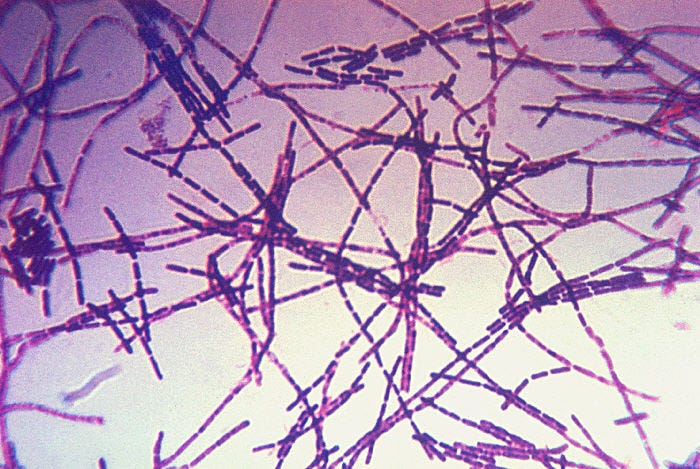The Uganda Ministry of Health (MOH) reports that since the beginning of 2024, 25 new anthrax cases (7 confirmed, 3 probable and 15 suspected) and three deaths among the confirmed cases (42.9 percent CFR) from three districts-Kazo (22 cases/3 deaths), Kyotera (1) and Ibanda (2).
Also in Kazo district, 177 animal anthrax deaths have been reported.
The MOH notes that this is a protracted outbreak that started last July 2023.
Anthrax is a bacterial pathogen in livestock and wild animals. Ruminants such as bison, cattle, sheep and goats are highly susceptible, and horses can also be infected.
Anthrax is a very serious disease of livestock because it can potentially cause the rapid loss of a large number of animals in a very short time. Affected animals are often found dead with no illness detected.
When conditions become favorable, the spores germinate into colonies of bacteria. An example would be a grazing cow ingests spores that in the cow, germinate, grow spread and eventually kill the animal.
Anthrax is caused by the bacterium, Bacillus anthracis. This spore-forming bacteria can survive in the environment for decades because of its ability to resist heat, cold, drying, etc. This is usually the infectious stage of anthrax.
Subscribe to Outbreak News TV on YouTube
There are no reports of person-to-person transmission of anthrax. People get anthrax by handling contaminated animal or animal products, consuming undercooked meat of infected animals and more recently, intentional release of spores.
There are three types of human anthrax with differing degrees of seriousness: cutaneous, gastrointestinal and inhalation.
The average case fatality rate ranges from 20-30% in untreated cutaneous anthrax, 25-75% CFR for gastrointestinal anthrax and 80% of higher for inhalation anthrax.





